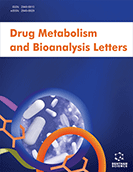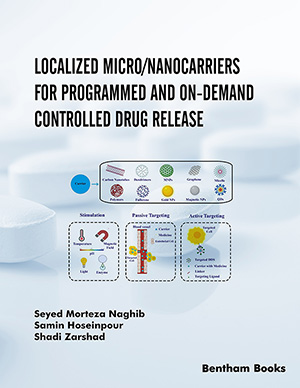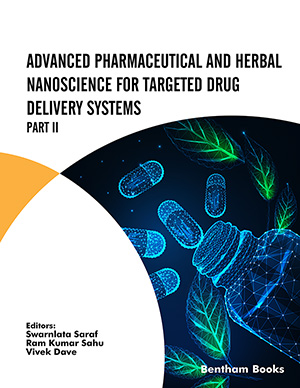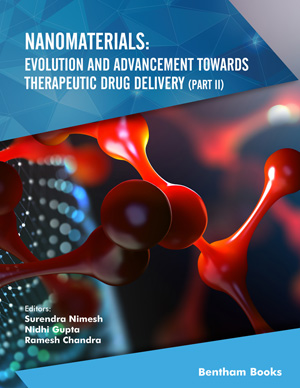
Abstract
Cancer is the second leading cause of mortality worldwide. The heightened nutrient uptake, particularly glucose, and elevated glycolysis observed in rapidly proliferating tumor cells highlight the potential targeting of energy metabolism pathways for the treatment of cancer. Numerous studies and clinical trials have demonstrated the efficacy of nutritional therapy in mitigating the adverse effects of chemotherapy and radiotherapy, enhancing treatment outcomes, prolonging survival, and improving the overall quality of life of patients. This review article comprehensively examines nutritional therapy strategies that specifically address tumor energy metabolism. Moreover, it explores the intricate interplay between energy metabolism and the gut microbiota in the context of nutritional therapy. The findings aim to provide valuable insights for future clinical research endeavors in this field.
Keywords: Tumor, nutritional therapy, energy metabolism, cancer treatment, mitochondria, glucose.
[http://dx.doi.org/10.1002/cncr.33587] [PMID: 34086348]
[http://dx.doi.org/10.1016/j.bbabio.2017.01.012] [PMID: 28161329]
[http://dx.doi.org/10.3390/cancers13030432] [PMID: 33498743]
[http://dx.doi.org/10.1158/2159-8290.CD-20-1227] [PMID: 33504581]
[http://dx.doi.org/10.18632/oncotarget.15171] [PMID: 28187435]
[http://dx.doi.org/10.21037/tcr.2020.03.50] [PMID: 35117597]
[http://dx.doi.org/10.2147/OTT.S253137] [PMID: 32801776]
[http://dx.doi.org/10.1096/fj.201802675R] [PMID: 30970216]
[http://dx.doi.org/10.1074/jbc.RA117.000100] [PMID: 29514980]
[http://dx.doi.org/10.1016/j.prp.2022.154241] [PMID: 36543080]
[http://dx.doi.org/10.3390/nano10091671] [PMID: 32858957]
[http://dx.doi.org/10.3390/ijerph18084265] [PMID: 33920572]
[http://dx.doi.org/10.1002/cncr.10248] [PMID: 11857323]
[http://dx.doi.org/10.1177/2040622320970354] [PMID: 33294145]
[http://dx.doi.org/10.3389/fonc.2021.682999] [PMID: 34055649]
[http://dx.doi.org/10.1093/annonc/mdz276.037] [PMID: 27885969]
[http://dx.doi.org/10.21873/anticanres.14937] [PMID: 33813376]
[http://dx.doi.org/10.1186/s13063-022-06898-2] [PMID: 36435838]
[http://dx.doi.org/10.1016/j.appet.2015.04.049] [PMID: 25912786]
[http://dx.doi.org/10.1126/science.123.3191.309] [PMID: 13298683]
[http://dx.doi.org/10.1155/2022/4802338] [PMID: 35757505]
[http://dx.doi.org/10.1016/j.ccr.2012.02.014] [PMID: 22439925]
[http://dx.doi.org/10.1126/science.1160809] [PMID: 19460998]
[http://dx.doi.org/10.1186/s40880-018-0336-6] [PMID: 30367676]
[http://dx.doi.org/10.1002/cac2.12108] [PMID: 33119215]
[http://dx.doi.org/10.1016/S0301-0082(99)00010-6] [PMID: 10501633]
[http://dx.doi.org/10.3390/cells8010064] [PMID: 30658430]
[http://dx.doi.org/10.1177/1534735416684551] [PMID: 28008780]
[http://dx.doi.org/10.3892/ijo.2020.5152] [PMID: 33367927]
[http://dx.doi.org/10.1016/j.bbamcr.2021.119117] [PMID: 34384791]
[http://dx.doi.org/10.1371/journal.pone.0104632] [PMID: 25115854]
[http://dx.doi.org/10.1111/cpr.12702] [PMID: 31628715]
[PMID: 29869056] [http://dx.doi.org/10.1007/s11626-018-0264-4]
[http://dx.doi.org/10.1007/s00726-019-02739-w] [PMID: 31073693]
[http://dx.doi.org/10.1186/1743-7075-6-26] [PMID: 19500359]
[http://dx.doi.org/10.1155/2014/239750] [PMID: 25400942]
[http://dx.doi.org/10.1038/onc.2015.291] [PMID: 26257063]
[http://dx.doi.org/10.1038/s41598-019-52112-w] [PMID: 31664147]
[http://dx.doi.org/10.3390/nu14142824] [PMID: 35889781]
[http://dx.doi.org/10.1186/s12885-016-2103-x] [PMID: 26847205]
[http://dx.doi.org/10.3390/ijms20204978] [PMID: 31600911]
[http://dx.doi.org/10.1258/000456303321610493] [PMID: 12803831]
[http://dx.doi.org/10.3390/antiox10050759] [PMID: 34064686]
[http://dx.doi.org/10.1016/j.jaad.2005.08.031] [PMID: 16443053]
[http://dx.doi.org/10.1097/CMR.0b013e32818867a0] [PMID: 17505263]
[http://dx.doi.org/10.1158/0008-5472.CAN-17-2172] [PMID: 29967258]
[http://dx.doi.org/10.1079/BJN20051439] [PMID: 16022760]
[http://dx.doi.org/10.1111/febs.14577] [PMID: 29893496]
[http://dx.doi.org/10.5146/tjpath.2021.01557] [PMID: 34580846]
[http://dx.doi.org/10.7150/jca.72161] [PMID: 35711842]
[http://dx.doi.org/10.1007/s00795-023-00348-x] [PMID: 36749415]
[http://dx.doi.org/10.1002/jcb.10423] [PMID: 12577303]
[http://dx.doi.org/10.1016/j.jsbmb.2023.106332] [PMID: 37217104]
[http://dx.doi.org/10.1016/j.chembiol.2013.12.016] [PMID: 24529992]
[PMID: 25207358]
[http://dx.doi.org/10.1080/0284186X.2020.1837391] [PMID: 33103532]
[http://dx.doi.org/10.1016/j.apsb.2018.09.002] [PMID: 30972274]
[http://dx.doi.org/10.1016/j.bbamcr.2017.06.019] [PMID: 28651973]
[http://dx.doi.org/10.1016/j.jnutbio.2017.10.013] [PMID: 29216499]
[http://dx.doi.org/10.1093/advances/nmaa055] [PMID: 32488249]
[PMID: 24391388]
[http://dx.doi.org/10.1158/0008-5472.CAN-03-2904] [PMID: 15172999]
[http://dx.doi.org/10.1101/gad.889901] [PMID: 11390360]
[http://dx.doi.org/10.1074/jbc.271.49.31372] [PMID: 8940145]
[http://dx.doi.org/10.2337/diabetes.47.7.1006] [PMID: 9648821]
[http://dx.doi.org/10.3390/nu10091289] [PMID: 30213082]
[http://dx.doi.org/10.1016/j.clnu.2022.06.034] [PMID: 35830775]
[http://dx.doi.org/10.1096/fj.201601173R] [PMID: 28183803]
[http://dx.doi.org/10.1006/abbi.1996.9850] [PMID: 9028870]
[http://dx.doi.org/10.1042/BSR20171666] [PMID: 29298880]
[http://dx.doi.org/10.1002/ijc.23689] [PMID: 18512238]
[http://dx.doi.org/10.1158/1940-6207.CAPR-15-0154] [PMID: 26130252]
[http://dx.doi.org/10.1093/ajcn/74.6.714] [PMID: 11722951]
[http://dx.doi.org/10.1002/mnfr.201500847] [PMID: 26751721]
[http://dx.doi.org/10.1080/01635581.2014.956250] [PMID: 25296535]
[http://dx.doi.org/10.1177/1534735416675950] [PMID: 28818030]
[http://dx.doi.org/10.1016/j.ejphar.2014.09.050] [PMID: 25446928]
[http://dx.doi.org/10.1038/s41586-018-0729-3] [PMID: 30464341]
[http://dx.doi.org/10.1074/jbc.M511982200] [PMID: 16339137]
[http://dx.doi.org/10.1021/acsmaterialslett.3c00063]
[http://dx.doi.org/10.1016/j.apsb.2021.05.016] [PMID: 35127398]
[http://dx.doi.org/10.3389/fphar.2022.877543] [PMID: 35645798]
[http://dx.doi.org/10.1002/ctm2.226] [PMID: 33252849]
[http://dx.doi.org/10.1111/bph.15424] [PMID: 33651382]
[http://dx.doi.org/10.3389/fonc.2020.00274] [PMID: 32219064]
[http://dx.doi.org/10.3390/life11090963] [PMID: 34575112]
[http://dx.doi.org/10.1038/s41467-019-13668-3] [PMID: 31900386]
[http://dx.doi.org/10.1007/s13238-017-0451-1] [PMID: 28748451]
[http://dx.doi.org/10.1089/ars.2019.7974] [PMID: 31847530]
[http://dx.doi.org/10.2174/1568026618666180523105756] [PMID: 29788890]
[http://dx.doi.org/10.1016/j.ymgme.2003.12.009] [PMID: 14972331]
[http://dx.doi.org/10.1074/jbc.M601140200] [PMID: 16679318]
[http://dx.doi.org/10.3390/ijms21176021] [PMID: 32825675]
[http://dx.doi.org/10.1093/ecam/nek009] [PMID: 16550223]
[PMID: 23893925]
[http://dx.doi.org/10.1111/nyas.14569] [PMID: 33576090]
[http://dx.doi.org/10.1007/s00280-014-2386-z] [PMID: 24452394]
[http://dx.doi.org/10.3390/molecules23061464] [PMID: 29914147]
[http://dx.doi.org/10.1016/j.biopha.2019.109648] [PMID: 31810115]
[http://dx.doi.org/10.1177/030089160008600201] [PMID: 10855846]
[http://dx.doi.org/10.1016/S0946-672X(99)80043-1] [PMID: 10707348]
[http://dx.doi.org/10.1007/s12011-009-8401-2] [PMID: 19458925]
[http://dx.doi.org/10.1111/j.1365-2141.2011.08744.x] [PMID: 21770918]
[http://dx.doi.org/10.1016/j.freeradbiomed.2018.05.066] [PMID: 29778465]
[http://dx.doi.org/10.1089/jmf.2015.0145] [PMID: 27266340]
[http://dx.doi.org/10.1016/j.jtemb.2023.127147] [PMID: 36963369]
[http://dx.doi.org/10.1074/jbc.M307841200] [PMID: 12949071]
[http://dx.doi.org/10.1097/CAD.0b013e328314b5c5] [PMID: 18830129]
[http://dx.doi.org/10.1155/2014/246748] [PMID: 25431605]
[http://dx.doi.org/10.1177/1534735416673907] [PMID: 27821721]
[http://dx.doi.org/10.1016/j.bcp.2015.09.003] [PMID: 26348871]
[http://dx.doi.org/10.1007/s00204-023-03456-w] [PMID: 36847822]
[http://dx.doi.org/10.1016/S0006-2952(97)00434-6] [PMID: 9413934]
[http://dx.doi.org/10.1016/j.semcancer.2017.06.008] [PMID: 28645607]
[http://dx.doi.org/10.1186/2049-3002-2-10] [PMID: 25057353]
[http://dx.doi.org/10.1016/j.molmet.2021.101203] [PMID: 33676027]
[http://dx.doi.org/10.1186/1479-5876-8-118] [PMID: 21087493]
[http://dx.doi.org/10.1016/j.toxlet.2007.02.002] [PMID: 17590543]
[http://dx.doi.org/10.1002/lary.20524] [PMID: 19402154]
[http://dx.doi.org/10.1002/(SICI)1097-0045(19980601)35:4<285:AID-PROS8>3.0.CO;2-F] [PMID: 9609552]
[http://dx.doi.org/10.1196/annals.1299.056] [PMID: 15033742]
[http://dx.doi.org/10.3389/fphar.2019.00319] [PMID: 31001120]
[http://dx.doi.org/10.1016/j.biopha.2021.111444] [PMID: 33662679]
[http://dx.doi.org/10.1038/s41467-018-05184-7] [PMID: 29985401]
[http://dx.doi.org/10.15252/embj.2021108175] [PMID: 33821503]
[http://dx.doi.org/10.1136/bmj.k2179] [PMID: 29899036]
[http://dx.doi.org/10.1126/science.aay9189] [PMID: 32467386]
[http://dx.doi.org/10.1186/s40168-020-00854-5] [PMID: 32466801]
[http://dx.doi.org/10.1111/imm.13397] [PMID: 34322877]
[http://dx.doi.org/10.1038/s41575-019-0121-2] [PMID: 30824884]
[http://dx.doi.org/10.1186/s13099-022-00499-9] [PMID: 35729658]
[http://dx.doi.org/10.3390/ijms22094906] [PMID: 34063173]
[http://dx.doi.org/10.1186/s40104-021-00576-0] [PMID: 33866972]
[http://dx.doi.org/10.3389/fmicb.2020.00050] [PMID: 32117102]
[http://dx.doi.org/10.1016/j.aninu.2021.09.012] [PMID: 35573092]
[http://dx.doi.org/10.1152/physrev.2001.81.3.1031] [PMID: 11427691]
[http://dx.doi.org/10.1016/S0140-6736(08)60269-X] [PMID: 18280327]
[http://dx.doi.org/10.1371/journal.pone.0009085] [PMID: 20140211]
[http://dx.doi.org/10.21101/cejph.a5313] [PMID: 31580563]
[http://dx.doi.org/10.1017/S095442241700004X] [PMID: 28676135]
[http://dx.doi.org/10.1016/bs.afnr.2021.12.001] [PMID: 35595397]
[http://dx.doi.org/10.1016/0091-7435(87)90072-7] [PMID: 2819851]
[http://dx.doi.org/10.1016/S0140-6736(18)31809-9] [PMID: 30638909]
[http://dx.doi.org/10.1007/s11894-019-0725-2] [PMID: 31792624]
[http://dx.doi.org/10.3390/nu13051655] [PMID: 34068353]
[http://dx.doi.org/10.1080/19490976.2017.1290756] [PMID: 28165863]
[http://dx.doi.org/10.3389/fmicb.2016.00129] [PMID: 26904005]
[http://dx.doi.org/10.1007/s11033-020-05611-3] [PMID: 32623619]
[http://dx.doi.org/10.3390/foods10102312] [PMID: 34681359]
[http://dx.doi.org/10.1038/sigtrans.2016.35] [PMID: 29263907]
[http://dx.doi.org/10.1038/s41424-018-0067-7] [PMID: 30356041]
[http://dx.doi.org/10.1080/10408398.2015.1067596] [PMID: 26462851]
[http://dx.doi.org/10.1016/j.biopha.2020.110409] [PMID: 32563987]
[http://dx.doi.org/10.1002/mnfr.202300221] [PMID: 37552810]
[http://dx.doi.org/10.1007/s10875-012-9708-x] [PMID: 22711009]
[http://dx.doi.org/10.1111/j.1365-2036.2010.04492.x] [PMID: 21083585]
[http://dx.doi.org/10.1136/bmjgast-2017-000145] [PMID: 28944067]
[http://dx.doi.org/10.3389/fendo.2022.834674] [PMID: 35350100]
[http://dx.doi.org/10.1038/s41586-020-2124-0] [PMID: 32214253]
 42
42 2
2



















